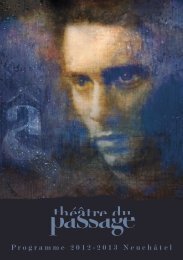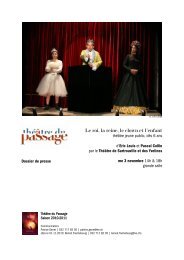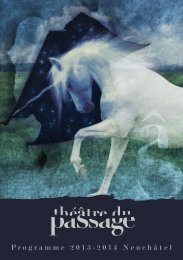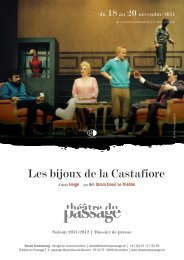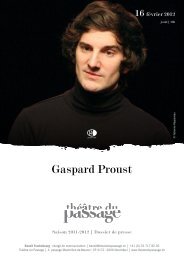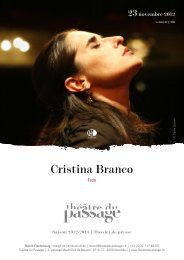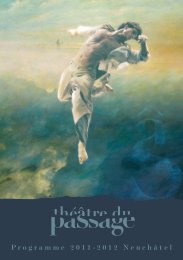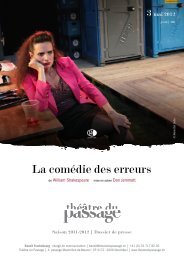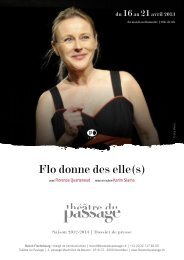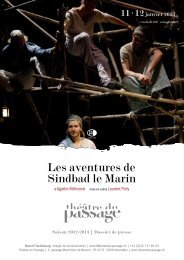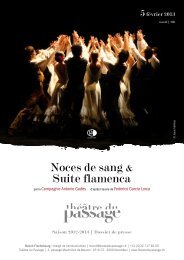BIOGRAPHIE COLLABORATEURS - Théâtre du Passage
BIOGRAPHIE COLLABORATEURS - Théâtre du Passage
BIOGRAPHIE COLLABORATEURS - Théâtre du Passage
Create successful ePaper yourself
Turn your PDF publications into a flip-book with our unique Google optimized e-Paper software.
Review: Edouard Lock debut in AmsterdamFriday, January 7, 2011By Victor Swoboda, Special to The GazetteMontreal’s La La La Human Steps were up to the demands of Edouard Lock’s latest, called NewWork, at the premiere in Amsterdam.Deen van Meer, HET NATIONALE BALLET & HET MUZIEKTHEATER AMSTERDAMAMSTERDAM – La La La Human Steps began its fourth decade auspiciously in Amsterdam thisweek with the world premiere of Edouard Lock’s latest major work largely involving newdancers, a distinguished guest artist in the person of Diana Vishneva of Russia’s MaryinskyBallet, and, most significantly, choreography of great depth, subtlety, range of movement andemotional resonance. Publicized rather oddly only as “Edouard Lock’s New Work,” the 95-minute piece could well be his finest creation.On Thursday (Jan. 6), throughout the second performance of the three-day Amsterdam run, therewas evidence that Lock pushed beyond the parameters that he established in Amelia (2002) andAmjad (2007), works that emphasized brilliant <strong>du</strong>ets for men fiercely gesticulating and women onpoint spinning like tops.Never fear, the new work had plenty of gesticulation and fantastic spinning by both the womenon point as well as the men – the 12-member cast outfitted in familiar La La La black was amarvel. But at times for purposes of dramatic contrast, Lock allowed body lines to become looser,more relaxed, without the relentless tension seen in the earlier works. Instead of extendedclinches, couples in <strong>du</strong>ets separated for longer intervals and at a farther distance on the big HetMuziektheater stage (comparable to Salle Wilfrid Pelletier’s).Lock also unusually had his dancers often sprawling on the floor. Indeed, after the onstage fourmemberband played an overture of Gavin Bryars’ music (his pseudo-Baroque score was ahighlight throughout the work, with a particularly poignant saxophone), the curtain rose on thefloor-bound arched figure of Talia Evtushenko, her arm raised plaintively. Regularly the floorcame into play <strong>du</strong>ring intense exchanges between couples.Each time that the dancers came together after separating or rose up from the floor to find eachother, there was dramatic, emotional reconciliation (frequently followed immediately by anotherbreakup – these were people bound by an emotional vicious circle). Lock is the mostunsentimental of choreographers, but his work nonetheless regularly shows people tryingdesperately to make connections with other people, however brief or in vain.This was certainly evident in this latest piece, which was inspired, according to the publicity, bytwo classic tales of love, Dido and Aeneas, and Orfeo and Eurydice. Lock took not their plots, but




